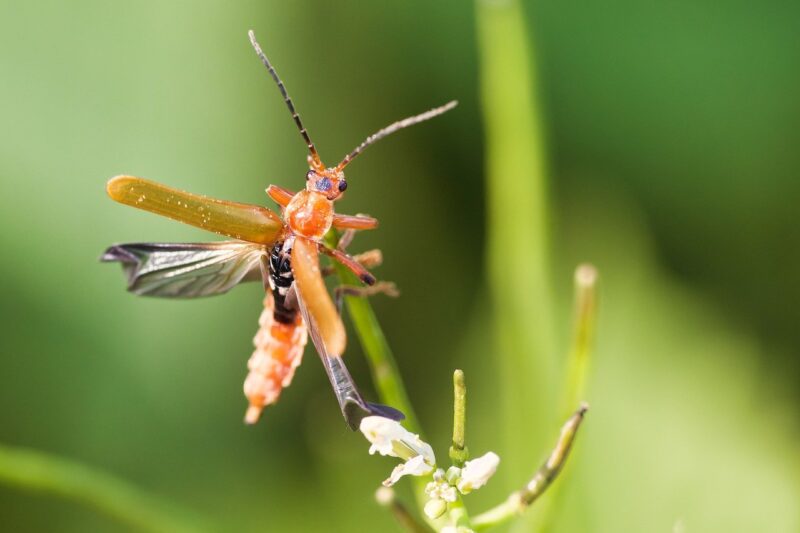How Insects Are Becoming a Staple Food for Eco-Conscious Eaters
November 13, 2024

In recent years, the global food landscape has begun to change dramatically, and one of the most surprising developments is the emergence of insects as a sustainable source of nutrition. What was once considered a niche dietary choice is rapidly gaining traction among eco-conscious eaters, food innovators, and health enthusiasts. In this article, we will explore how insects are becoming a staple food, the benefits they offer, and what the future holds for this unconventional protein source.
1. The Rise of Insects in Human Diets
Insects have been a part of the human diet for thousands of years. Cultures in regions such as Africa, Asia, and Latin America have traditionally consumed insects, whether as snacks, ingredients in dishes, or even staples. However, the idea of eating insects has only recently penetrated Western societies. The increasing concern about sustainability, food security, and health have led to renewed interest in the edible insect movement.
According to the Food and Agriculture Organization (FAO), over 2 billion people worldwide eat insects, from crickets and grasshoppers to mealworms and larvae. These little creatures are being promoted not just for their nutritional benefits but also for their low environmental impact compared to traditional livestock.
2. Nutritional Benefits of Insects
Insects are often heralded as a superfood, packed with essential nutrients that can contribute to a balanced diet. Here are some of the key nutritional benefits:
- High in Protein: Insects are rich in protein, with some species containing up to 80% protein by weight. This makes them an excellent alternative protein source for those seeking to reduce meat consumption.
- Source of Healthy Fats: Many edible insects are also high in healthy fats, including omega-3 and omega-6 fatty acids, which are crucial for heart health.
- Vitamins and Minerals: Insects are a good source of essential vitamins and minerals, including B vitamins, iron, zinc, and magnesium, which are important for overall health.
- Low in Carbs: For those following low-carbohydrate diets, many insects contain minimal carbohydrates, making them suitable for keto and paleo diets.
Incorporating insects into the diet can provide these nutritional benefits while also reducing reliance on conventional meat sources.
3. Environmental Benefits: A Sustainable Alternative
One of the driving forces behind the shift towards edible insects is their minimal environmental impact compared to traditional livestock. Consider the following statistics:
- Lower Greenhouse Gas Emissions: Rearing insects generates significantly lower greenhouse gas emissions than cattle, pigs, or chickens. For example, crickets produce 80% less methane than cattle.
- Efficient Feed Conversion: Insects require far less feed to produce the same amount of protein. For instance, crickets need only 1.7 kilograms of feed to produce 1 kilogram of edible body weight, while cattle require 8 kilograms.
- Reduced Water Usage: Insect farming consumes considerably less water compared to traditional animal farming, making them a more sustainable choice in regions facing water scarcity.
- Waste Reduction: Edible insects can be farmed on organic waste, helping to reduce food waste and promote a circular economy.
By choosing insects as a protein source, consumers can significantly lower their carbon footprint and contribute to more sustainable food systems.
4. How to Incorporate Insects into Your Diet
For those interested in trying edible insects, there are many ways to incorporate them into everyday meals. Here are some suggestions:
- Protein Bars: Many brands now offer protein bars that include cricket protein, providing a nutritious snack alternative.
- Flour Substitutes: Insect flour can be blended into baked goods to enhance their protein content. Consider adding mealworm or cricket flour to pancakes, muffins, or even pizza dough.
- Savoury Snacks: Roasted insects, seasoned with spices, can serve as crunchy snacks. Popular options include roasted crickets or grasshoppers flavored with garlic, chili, or lime.
- Insect-infused Dishes: Chefs and food innovators are increasingly creating dishes that feature insects, such as tacos topped with mealworm salsa or pasta enriched with cricket flour.
Introducing insects into your diet can be an adventurous yet healthy choice.
5. Overcoming the Psychological Barriers
Despite the many benefits, some consumers continue to resist the idea of eating insects, largely due to cultural norms and the “yuck” factor. To overcome these psychological barriers:
- Education: Informed individuals are more likely to embrace new foods. Educational campaigns can help demystify the health benefits and environmentally sustainable aspects of entomophagy.
- Positive Branding: Companies are beginning to market insect products in ways that are appealing to consumers. Attractive packaging, funny branding, and recipes can help shift perspectives.
- Culinary Innovation: Food scientists and chefs play a critical role in making insect dishes palatable. As creative recipes spread, they help normalize insect consumption.
- Influencer Endorsements: Celebrity chefs and social media influencers who embrace insects can have a powerful impact on shifting consumer perceptions.
As more people try insect products, their acceptance may grow, leading to wider adoption in everyday diets.
6. The Future of Food: Insects on the Menu
The push towards sustainable eating is more critical than ever, and the role of insects in our diets is poised to expand. As awareness increases and acceptance grows, we can expect to see:
- Increased Availability: Grocery stores, specialty shops, and online platforms are likely to offer a wider range of insect-based products as demand rises.
- Innovative Food Products: Food tech companies are entering the market to develop novel products that incorporate insects. This includes everything from snacks to protein powders.
- Policy Support: Governments may implement policies to support insect farming, research, and consumption, recognizing the benefits for food security and sustainability.
- Global Collaboration: Countries will share knowledge and technology related to insect farming, enhancing production methods and standards for edible insects worldwide.
As we face the challenges of population growth and environmental degradation, insects may hold the key to our sustainable food future.
Conclusion
Insects are rapidly gaining recognition as a viable, sustainable, and nutritious food source, particularly for those concerned with their environmental impact. They not only provide a wealth of nutritional benefits but also offer a solution to some of the pressing challenges facing our food systems today. With greater awareness and acceptance, it’s only a matter of time before insects find their place as a staple on our plates.
Join the movement toward eco-conscious eating and embrace the idea of insects in your diet, one cricket taco at a time! Whether you are an adventurous eater or looking for sustainable nutrition solutions, there are plenty of reasons to crawl into the world of edible insects.







